If your website isn’t performing as expected, it’s time to take a deep dive into website analysis and optimization. You can’t just rely on intuition—you need data, insights, and a strategy to turn traffic into conversions.
This is where Plerdy’s all-in-one tools become essential. With features that help you analyze website performance, track visitor behavior, and implement data-driven changes, Plerdy ensures that every optimization effort is backed by real insights.
Step 1: Analyze Website Behavior with Plerdy’s Heatmap Tool
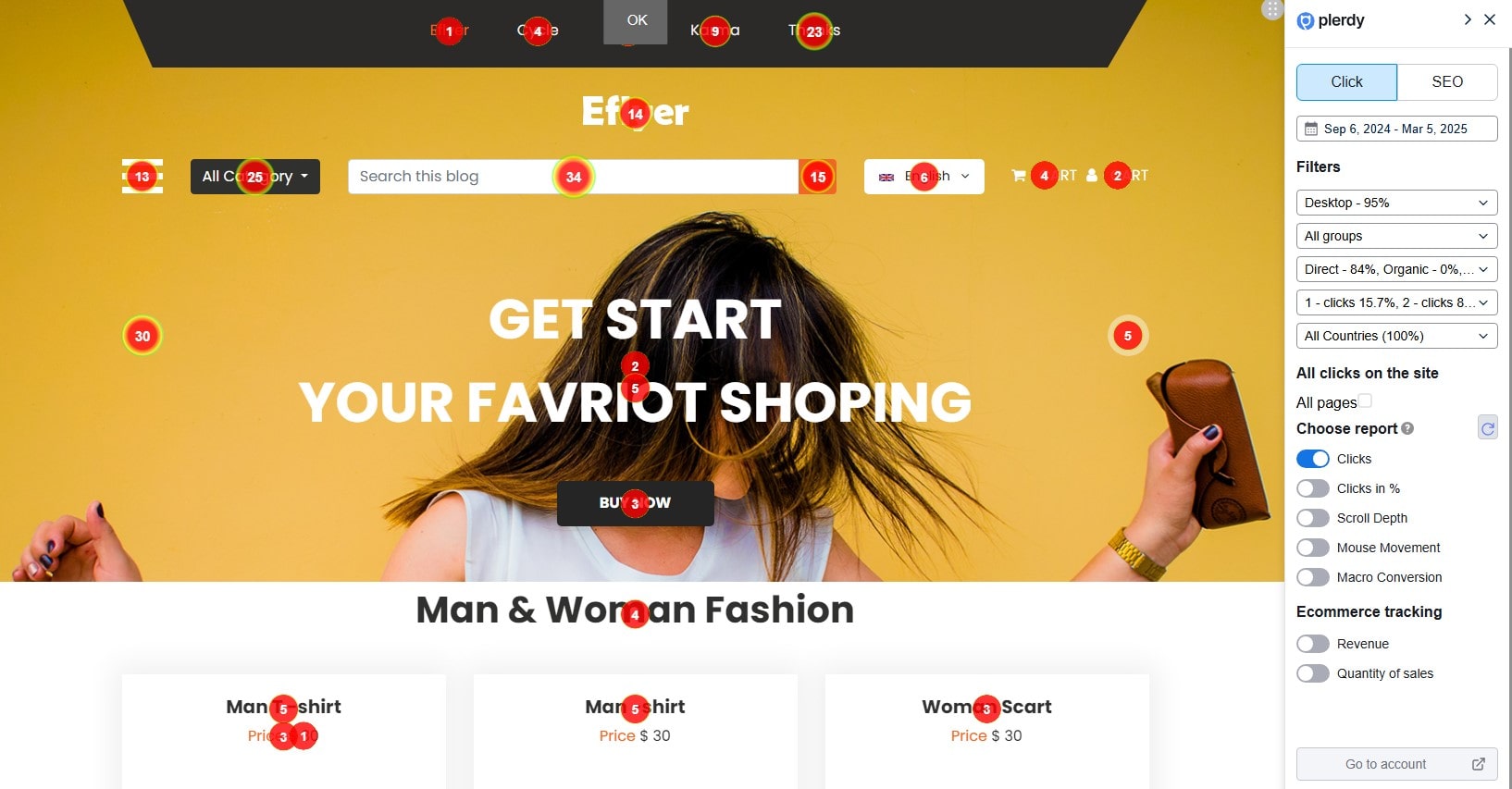
Every website interaction matters. Whether users click, scroll, or hover, each action gives clues about how they navigate your site. Plerdy’s Heatmap Tool provides detailed reports that help you analyze and optimize user behavior effectively.
Key Insights from Plerdy’s Heatmap Reports:
- Clicks Report – Displays click frequency on website elements, revealing engagement hotspots.
- Clicks in % – Divides the page into five equal sections, ensuring even hidden elements get analyzed.
- Scroll Depth – Shows how far users scroll, breaking the page into ten segments to highlight content visibility.
- Mouse Movement Tracking – Captures cursor activity to identify which parts of the page attract attention.
- Macro Conversion Report – Identifies which elements users interact with before making a purchase.
For example, an eCommerce business used Plerdy’s scroll depth analysis to discover that 40% of users never reached key product details. By moving essential content higher, they boosted conversions by 18%. If you’re not leveraging Plerdy for website analysis, you’re missing critical insights.
Step 2: Watch Real User Behavior with Plerdy’s Session Replay
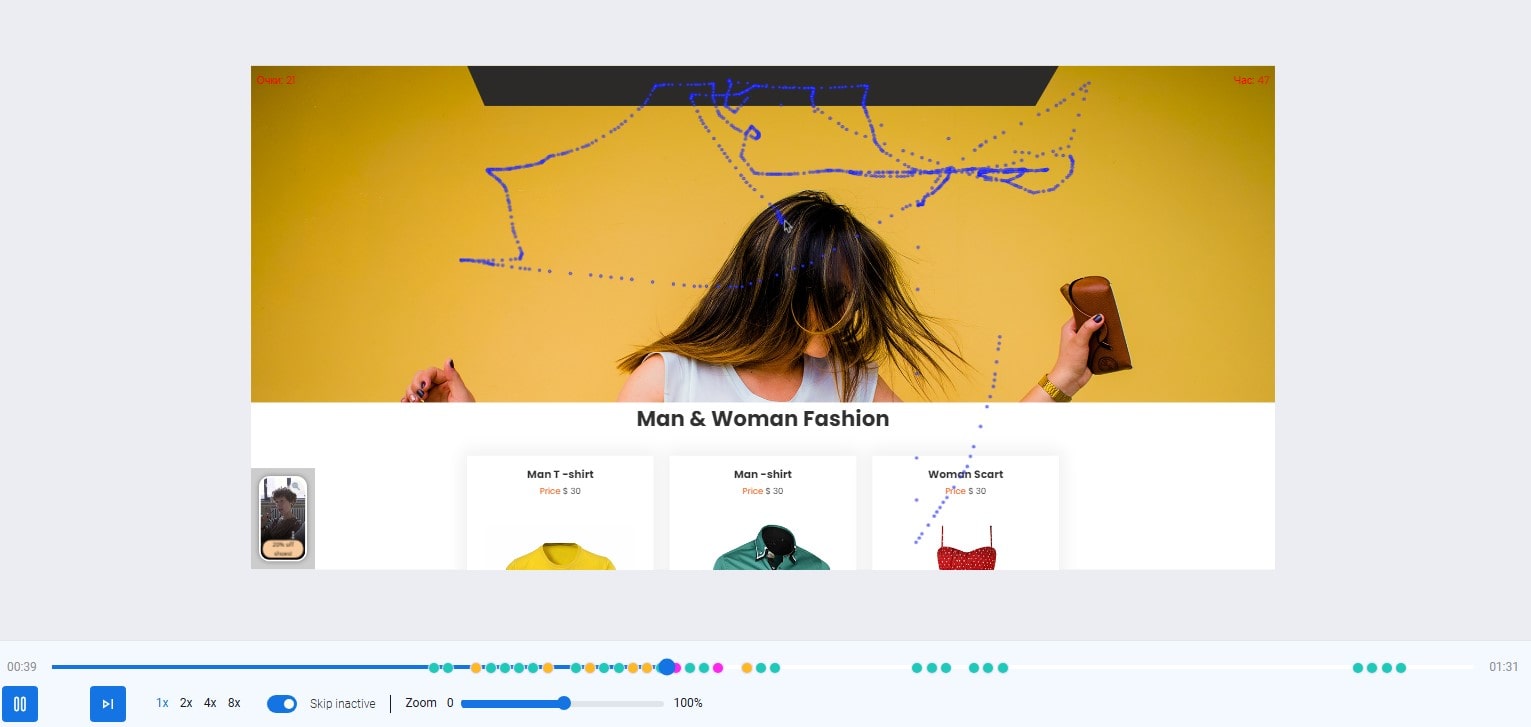
Numbers alone don’t show the full picture. You might see a high bounce rate but have no idea why users leave. That’s why session replay analysis is critical for website optimization.
With Plerdy’s Session Replay, you can:
- Analyze website visitors’ actions in real time.
- Identify UX bottlenecks that frustrate users.
- Spot errors, hesitation points, and rage clicks that impact conversions.
To start recording video sessions, set up Plerdy’s tracking rules. You can analyze all website pages or optimize specific ones. Advanced settings allow filtering sessions by country, session length, or key interactions. Plerdy automatically hides sensitive data (like form inputs) for security.
For example, an online store tracked cart interactions and discovered that 30% of users abandoned their carts due to confusion over shipping costs. After adjusting their checkout design, their conversion rate improved by 21%.
If you want to analyze website behavior effectively, replaying real user sessions is essential. Plerdy makes it simple, secure, and actionable.
Step 3: Optimize Conversions with Plerdy’s Pop-Up Software
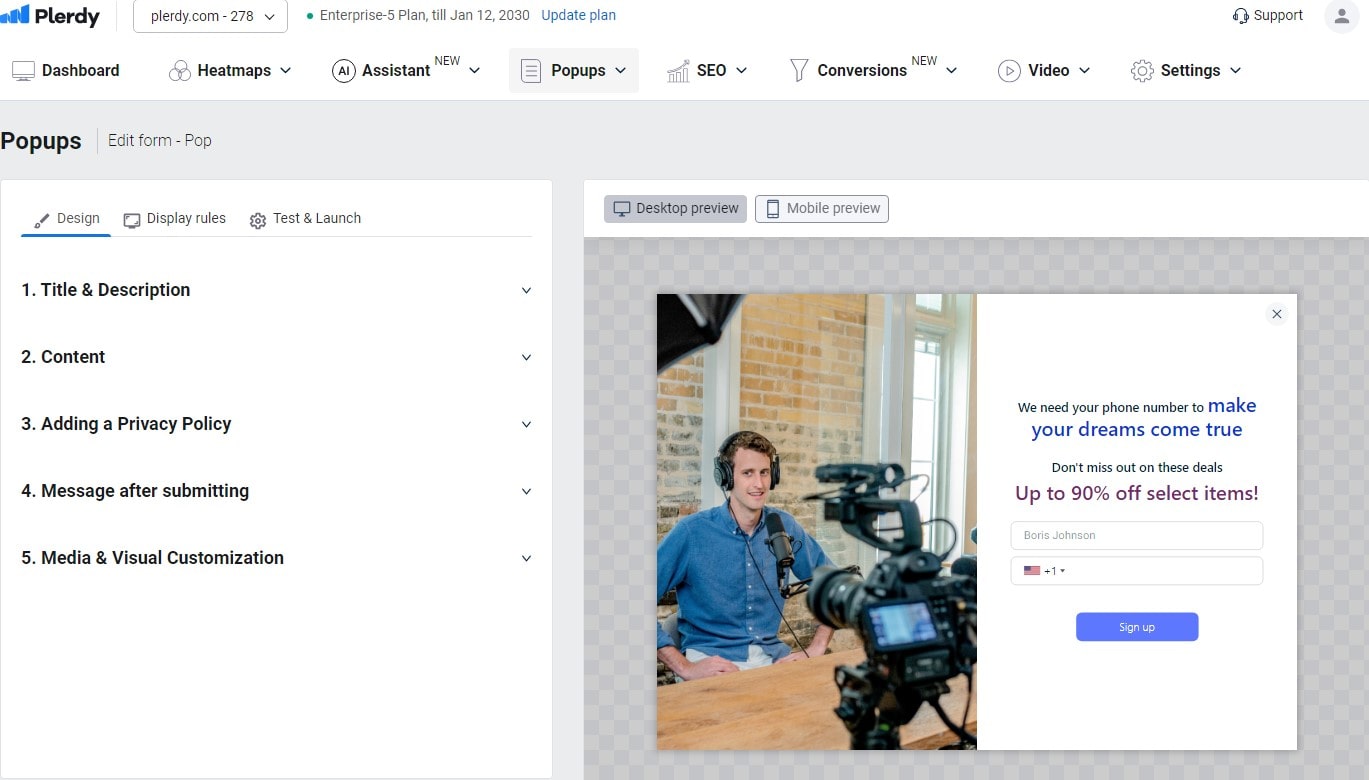
Not all pop-ups are annoying. When used strategically, they help optimize website engagement, boost sales, and increase lead generation. Plerdy’s Pop-Up Software offers multiple types of pop-ups designed for different business goals.
How Plerdy’s Pop-Ups Help Optimize Your Website:
- Lead Generation – Collect emails through lead magnets and grow your subscriber base.
- Promotional Offers – Highlight special deals that visitors might otherwise miss.
- User Feedback – Analyze visitor satisfaction with surveys to improve website UX.
- Engagement – Embed video pop-ups to introduce products or invite users to webinars.
- Custom Forms – Build personalized pop-ups to capture specific data.
A SaaS company used Plerdy’s pop-ups to analyze visitor behavior and found that exit-intent pop-ups reduced cart abandonment by 23%. By testing different designs, they discovered that time-delayed pop-ups performed 15% better than immediate ones.
Website optimization is all about delivering the right message at the right time. With Plerdy, setting up and analyzing pop-up performance takes just minutes.
Step 4: Analyze Website Funnels and Fix Drop-Off Points
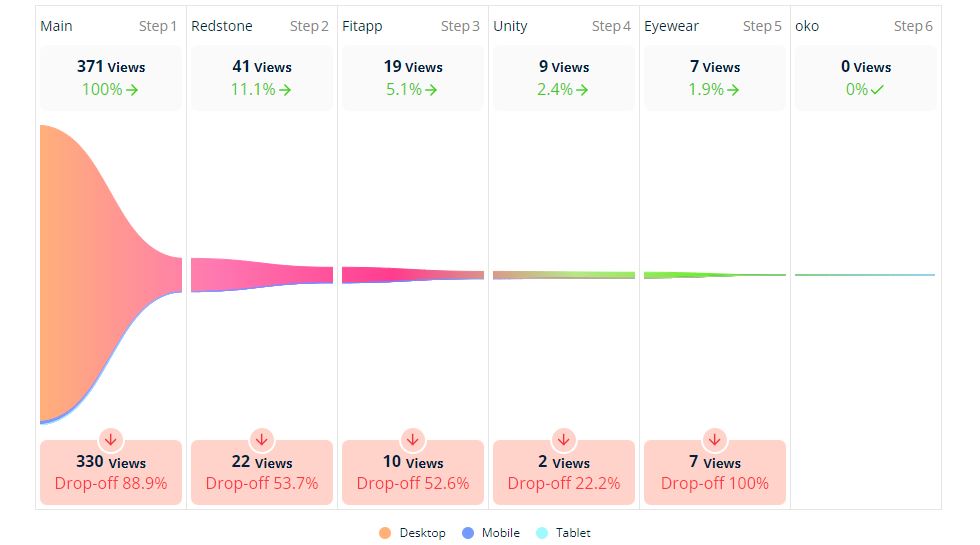
A well-optimized website funnel is essential for guiding visitors toward conversion. If users leave before completing key actions, you’re losing revenue. Plerdy’s Funnel Analysis Tool helps you analyze where visitors drop off and optimize the flow.
| Funnel Stage | Drop-off Rate | How to Optimize with Plerdy |
|---|---|---|
| Product Page | 38% | Improve CTA placement, add urgency |
| Checkout Page | 25% | Simplify form fields, enable guest checkout |
| Payment Page | 20% | Offer multiple payment options |
How to Set Up Your First Funnel in Plerdy:
- Select the first step – Choose a landing page where users arrive from different traffic channels (e.g., a category page in an online store).
- Add the second step – Define where users should go next (e.g., product pages within the same category).
- Set the final step – Include a goal page like a “Thank You” page or an order confirmation page.
For example, an eCommerce business used Plerdy’s funnel analysis to find that 40% of users dropped off between the cart and checkout pages. By simplifying the checkout form, they boosted conversions by 22%. If you don’t analyze website behavior, you’re losing potential customers. Plerdy provides the data you need to optimize every step.
Step 5: Optimize SEO with Plerdy’s SEO Checker
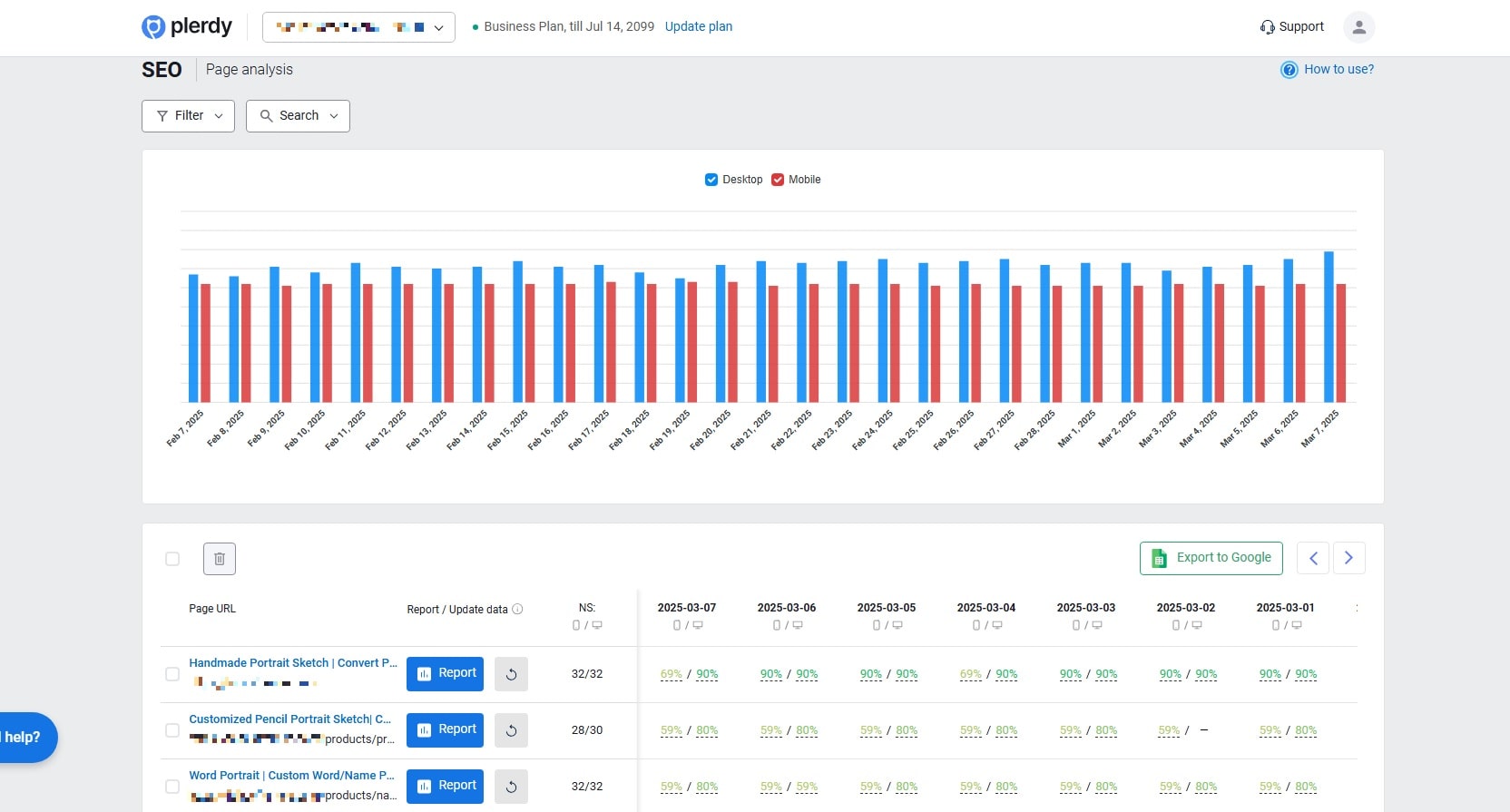
A well-optimized website isn’t just about usability—it also needs to rank on search engines. If your site isn’t optimized for SEO, you’re missing out on free traffic. Plerdy’s SEO Checker helps you:
- Analyze SEO issues like broken links, missing meta tags, and slow-loading pages.
- Automatically track SEO performance for pages with incoming traffic.
- Detect missing keywords by integrating Google Search Console, helping you optimize content for better rankings.
For instance, an online store used Plerdy’s SEO analysis to find that key pages were losing organic traffic due to missing keywords. By adding relevant search terms, they saw a 20% boost in impressions within a month. Plerdy also stores SEO data for 30 days, making it easy to track changes and spot sudden drops in ranking.
With daily SEO analysis, you can analyze website performance consistently and ensure your content remains competitive. Ignoring SEO trends means losing valuable traffic—Plerdy helps you stay ahead.
Step 6: Track Key Events with Plerdy’s Event Tracking
![]()
Every click on your website has a purpose. Whether users interact with a search bar, call-to-action button, or navigation menu, tracking these micro-events helps you analyze website engagement and optimize interactions.
How to Use Plerdy’s Event Tracking:
- Monitor clicks on key elements like forms, search fields, and product images.
- Analyze repeated interactions across multiple pages.
- Optimize engagement by identifying which elements attract the most attention.
For example, an eCommerce store used Plerdy’s event tracking to analyze clicks on the “Add to Cart” button. The data revealed that users clicked 20% more on mobile than desktop. By optimizing the button placement for mobile, they increased conversions by 17%.
If you want to analyze and optimize website elements effectively, tracking user behavior is non-negotiable. Plerdy makes event tracking simple, insightful, and results-driven.
Step 7: Test and Optimize with Plerdy’s A/B Testing Tool
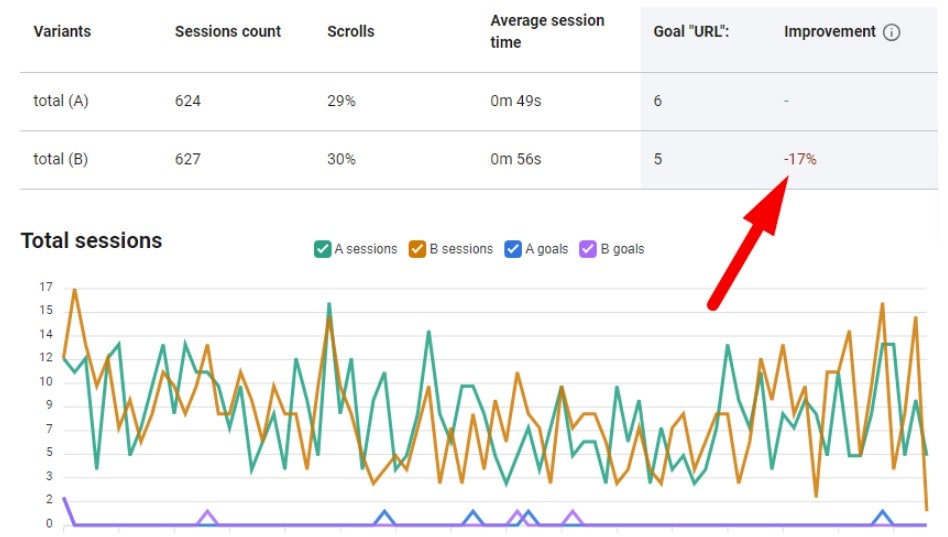
Optimization isn’t just about analyzing website performance—it’s about making incremental improvements based on real data. Plerdy’s A/B Testing Tool provides a limitless way to experiment without traffic restrictions, helping businesses optimize their website efficiently.
How to Set Up A/B Testing with Plerdy:
- Create a test in Conversions > A/B Testing.
- Analyze website elements by tweaking CTAs, colors, or layouts.
- Set a goal—track conversion impact on a “Thank You” page or product page.
- Compare real-time performance and determine the winning variation.
For example, an online store tested two different checkout button designs. The larger, high-contrast button resulted in a 12% increase in completed purchases. Without A/B testing, they would never have known.
If you’re serious about website optimization, Plerdy’s A/B Testing tool is a must-have for data-driven decision-making.
Why Choose Plerdy for Website Analysis and Optimization?
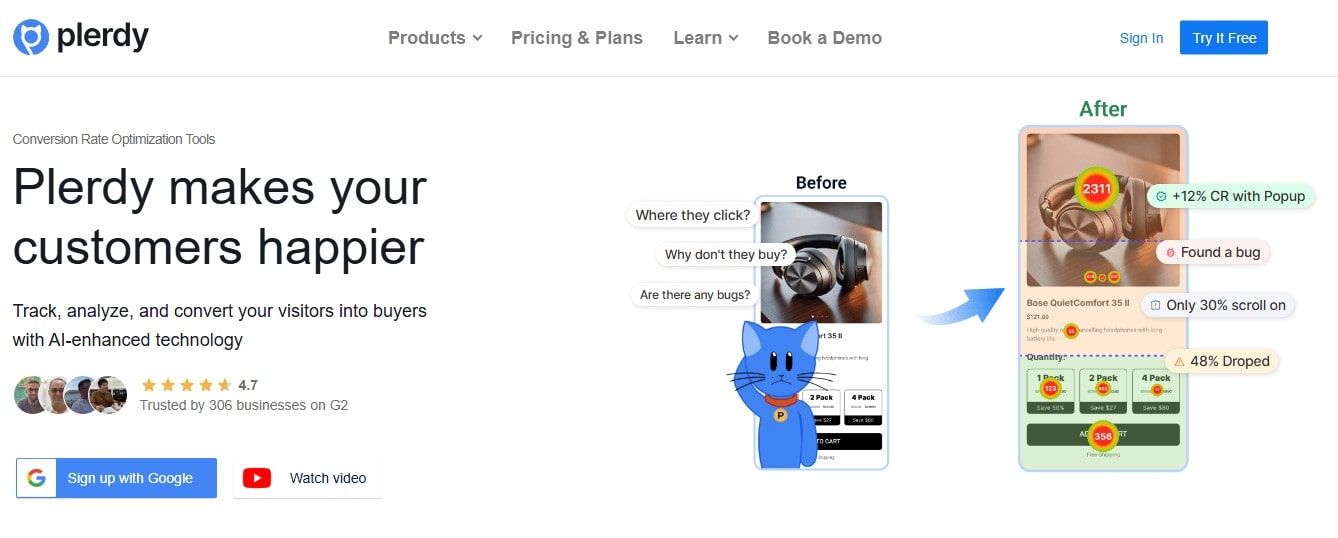
There are other tools—Google Analytics, Crazy Egg, AB Tasty—but Plerdy’s all-in-one platform eliminates the need for juggling multiple software solutions.
✅ Comprehensive website analysis in one dashboard.
✅ Real-time optimization insights for faster results.
✅ No extra scripts slowing down your website.
Why waste time and money on multiple tools when Plerdy does it all?
Final Thoughts
If you’re serious about website optimization, you need the right tools. Plerdy helps you:
- Analyze visitor behavior with heatmaps and session replays.
- Optimize conversions with pop-ups, funnels, and event tracking.
- Improve SEO and enhance user experience based on data.
Stop guessing. Start analyzing. Start optimizing. Start using Plerdy.
FAQ: How to Analyze and Optimize Your Website?
How does Plerdy help analyze website behavior?
Plerdy offers a suite of tools—such as heatmaps, session replay, and event tracking—that enable you to analyze every interaction on your website. These features help you identify which elements draw the most attention and how visitors navigate your site, providing the data needed to optimize performance.
What makes Plerdy an effective tool to optimize website conversions?
By using features like pop-up software and funnel analysis, Plerdy allows you to optimize every step of the conversion process. Its data-driven approach helps you adjust CTAs, redesign checkout processes, and experiment with A/B testing, ensuring that every optimization effort is backed by actionable insights.
How do session replay and event tracking contribute to website optimization?
Plerdy’s session replay lets you watch real user interactions, uncovering UX bottlenecks and potential pain points. Combined with event tracking—which monitors key clicks and engagements—these tools allow you to analyze website usage in detail and optimize the user journey effectively.
In what ways can Plerdy’s funnel analysis improve my website’s performance?
Plerdy’s funnel analysis tool identifies where users drop off during their journey. By analyzing each funnel stage, you can pinpoint specific issues—such as high drop-off rates between product and checkout pages—and optimize these areas to boost conversions and overall website performance.
What role does Plerdy’s SEO Checker play in website optimization?
The SEO Checker analyzes your website for SEO issues like broken links, missing meta tags, and slow-loading pages. This tool ensures that your website is not only user-friendly but also optimized for search engines, driving more organic traffic and improving your overall online presence.
